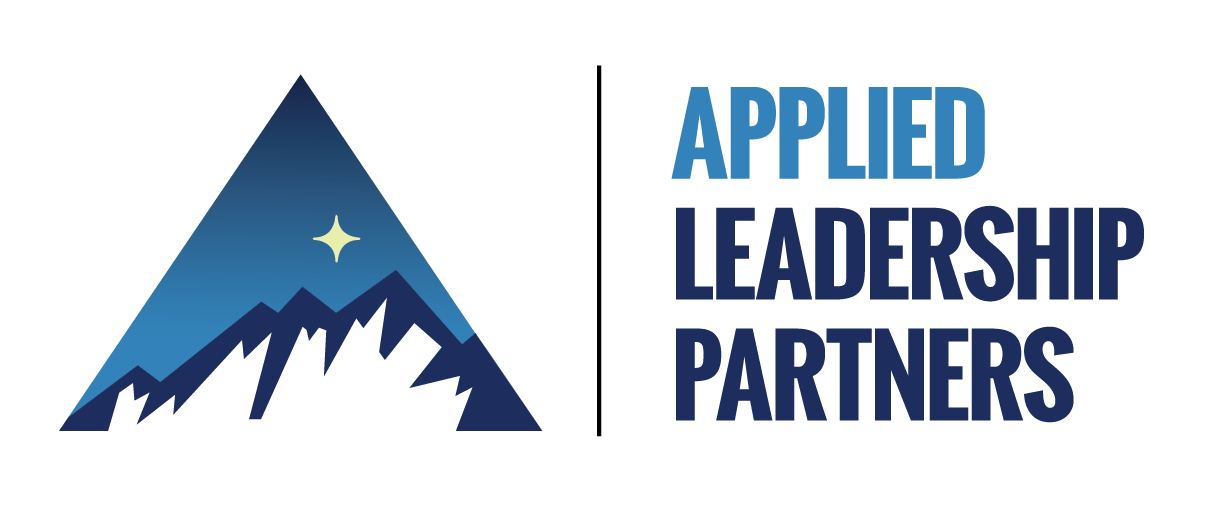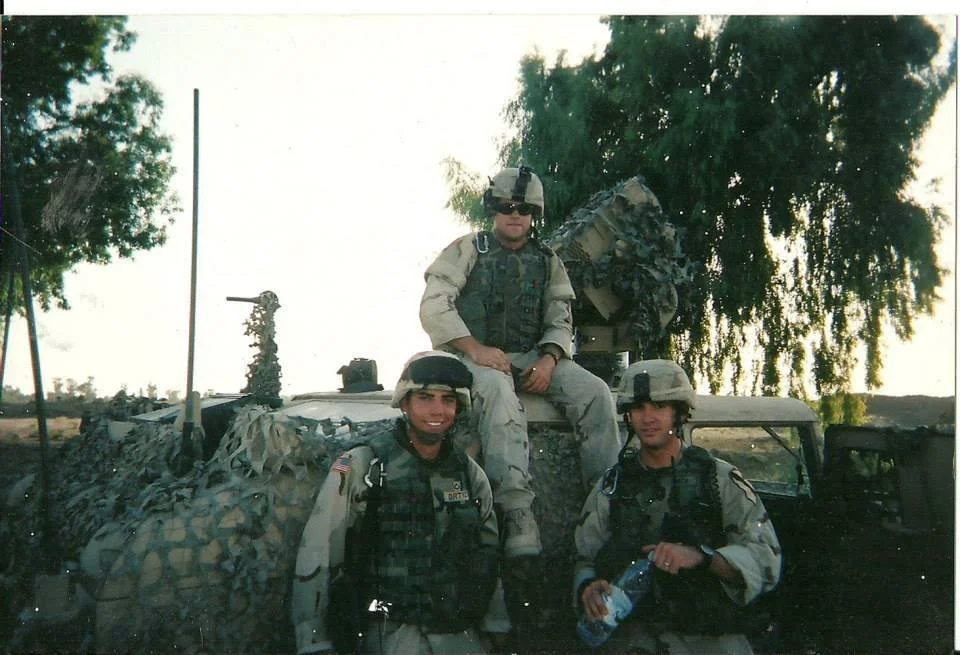Dear Friends,
We are excited to share Applied Leadership Partners’ second Annual Letter! Upon starting this journey, we were well aware that partnerships are notoriously difficult, and most small businesses don’t survive to see their second birthday. However, we are happy to report that, while it hasn’t always been easy, our friendship, our partnership, and our business are all thriving.
Over the course of 2021, we had 25 partner engagements, grew revenue by over 300%, and built some really strong new offerings. And we had a lot of fun doing it. But before we dive too deep into the particulars, let’s talk a little bit about how we got here.
By the end of 2020, we’d gotten quite busy. Leaders wanted, and benefited from, the work we were doing. To be honest, we began 2021 feeling a bit like the “dog that caught the car”. It’s one thing to chase after a dream, but another to wake up one day and feel like you’re achieving it.
So what does a dog do when it catches the car? He gets in and goes for the ride, so our theme for 2021 was: Get In!
We started the year understanding that all of 2020’s problems weren’t going to magically go away with the turning of the calendar. We knew that 2021 would bring its own set of surprises, challenges, and opportunities…and while we couldn’t predict them, we could prepare for them. In January, we gave a keynote address at a large national meeting and stressed that while we cannot have certainty, we can absolutely have confidence - and that earned confidence is attained through our experiences and our preparation.
In many ways, 2021 was a year of really rolling up our sleeves and digging into the practical aspects of leadership and teamwork. And while concepts like perseverance and sustainability still rang true, our modules around Expectations, Empowerment & Accountability, and Difficult Conversations remained very popular as organizations faced challenges like:
Returning to the office
Managing people in a hybrid work environment
Changing employee expectations and preferences
Shifting relationships with customers
Staff growth amidst opportunities
Staff reductions amidst challenges
Much of our work in 2021 was focused on alignment. Whether aligning on mission, brand, strategy, or priorities, teams need alignment more than ever. We helped our partners to understand that while we’d love to have agreement (harmony of opinion) on important issues, we can settle for alignment (harmony of effort) to carry us through effectively. Teams gained better alignment through four of our most popular modules and training programs: Difficult Conversations, Brand Alignment Workshops, Empowerment and Accountability, and our Applied Value Creation Training.
Difficult Conversations
The complexities of people, adversity, and organizational change always brings forth the need for difficult conversations within teams. Many great teams have fallen apart because of their unwillingness to have difficult conversations, and many mediocre teams remain mediocre because they have them poorly. The ability for trust to build between teammates in the midst of difficult conversations cannot be overstated. People grow through sound feedback, thoughtful direction, keen listening, and finally alignment on the way forward. Our module of having difficult conversations has been the most requested and delivered training over 2021.
Empowerment and Accountability
A number of our partners reached out to explore how to move the words “empowerment” and “accountability” into a way of life and a living breathing part of their cultures. Steeped in our experiences as Soldiers, we shared our vantage point on the critical interplay between authority and responsibility. In this module leaders learned healthy ways to extend ownership throughout the team to generate great success and deal with the ever changing landscape. Many of the teams we worked with had experienced personnel losses, new leadership, and new remote working paradigms and this module was beneficial to setting new processes in place and reinforcing processes that slipped over the course of so much change.
Brand Alignment Workshops
The theme of alignment blossomed in our Brand Alignment Workshops where we repeatedly found that organizations didn’t need new products and services - they needed a clear and consistent understanding of what they already had and the ability to communicate this for effectiveness. There is nothing more rewarding than witnessing the trust and confidence that teams share when they’re truly aligned. And we got the opportunity to see teams emerge with clear, codified brand messages after playing our full day “game”.
Every time we delivered this workshop throughout 2021 was a challenge that put us on our toes in a room full of professionals who know their business, and needed a little push top the next hilltop. And every time we left we were exhausted and the feedback was astounding. “You are not going to find very many people who could walk in here and do what Blayne and Brandon just did in one day. Their ability to engage the whole team, guide the discussion, listen thoughtfully, then distill it down into something clear and concise, and finally pitch our brand back to us is unheard of and helps us out significantly. This investment was thoroughly worth it!” - Joe Lebryk, Vice President of Business Development, State Volunteer Mutual Insurance Company (SVMIC).
Applied Value Creation Business Development Training
We believe that business development is leadership. From our vantage point, leadership is a relational process of influence that yields results. Leadership in a business development context effectively influences the exchange, and creation of value in a way that benefits all parties involved. We took that approach to task after leaving the Army, and refined an approach to professional selling over time that continues to yield excellent results.
Using this approach, we have generated over $200MM in revenue in the last twelve years for the organizations we have served and in our own business. We have turned around a failing business unit to become one of the highest profit centers in a $7B global laboratory business, led a $30MM multi-state/ multi-product sales district, grown a veteran serving nonprofit from concept to $9MM annual revenue, and constructed partnerships with the worlds most iconic brands including Nike, Starbucks, Microsoft, Walmart, and Apple.
This year, we packaged our approach to business development, Applied Value Creation, and delivered it to business development teams hungry to exceed their goals by creating long lasting, value accelerating partnerships with their customers.
Speaking of alignment, there’s nowhere it’s more important than at home and we are blessed to have two families fully behind the Applied Leadership Partners mission. The past year was also filled with a number of exciting developments worth sharing.
Brandon continues to pursue his studies at Denver Seminary and is now well over the halfway mark! He works alongside Kelly in the Reengage marriage ministry at their church, and created an amazing event called Proximity: Caring for Those Wounded by War, which helps veterans and community members to understand Moral Injury and the complexities of returning home from war.
Kelly continued the year on the front lines of the COVID-19 pandemic serving as a nurse in the Emergency Department, and has recently taken a new and exciting role in Interventional Radiology. She continues to serve as a volunteer nurse at Alternatives Pregnancy Center and leads a women’s bible study.
Jaden graduated from Army Basic Training and is preparing for his new life as a professional Soldier.
Elliot decided that four years was too long to be in high school and has ramped up her school work to graduate a year early this May.
Blayne continues his work with George W. Bush Institute and is leading a project that will bring mental and brain health services to thousands of our nation’s Veterans. He’s also serving as co-chairperson of the Armed Services Arts Partnership, and on the GORUCK board of advisors.
Jeni made a big shift and completed EMT training and certification in fall. And though she continues to work in the intelligence field, she’s got big plans for helping people to explore the outdoors.
Dylan is busy learning to drive, wrestle, and speak Japanese. At 15, he is really starting to come into his own.
Dalton dislikes middle school, as we all did. But he continues to impress us with his ability to ride, and perform sick tricks on a skateboard, snowboard, or mountain bike.
Penny is (mostly) a ray of sunshine and absolutely loves to sing and dance. She knows every word to Disney’s Encanto and has really embraced Kidz Bop!
Do. The. Work.
Looking into 2022, our primary goal is to establish a strong foundation for future growth. In our partner relationships, our content, our systems, and our team we want to continue building something that will last a lifetime. We’re right where we want to be, and now it’s just a matter of DOING THE WORK. With a fully booked Q1 and some long-term partnerships in place throughout the year, we feel like we can start making some investments in our business that will deliver huge value in the coming years. Over the course of 2022, you’ll see us roll out some new offerings, you’ll likely see some new faces joining us on the trail, and yes, we’re finally working on a book!
To close, we’d just like to offer a massive and sincere thank you to everybody that has made these past two years possible. The trust, encouragement, and support that we’ve experienced has been absolutely amazing, and we will be sure to make good on it.
Hope to see you on the trail,
Blayne and Brandon










































